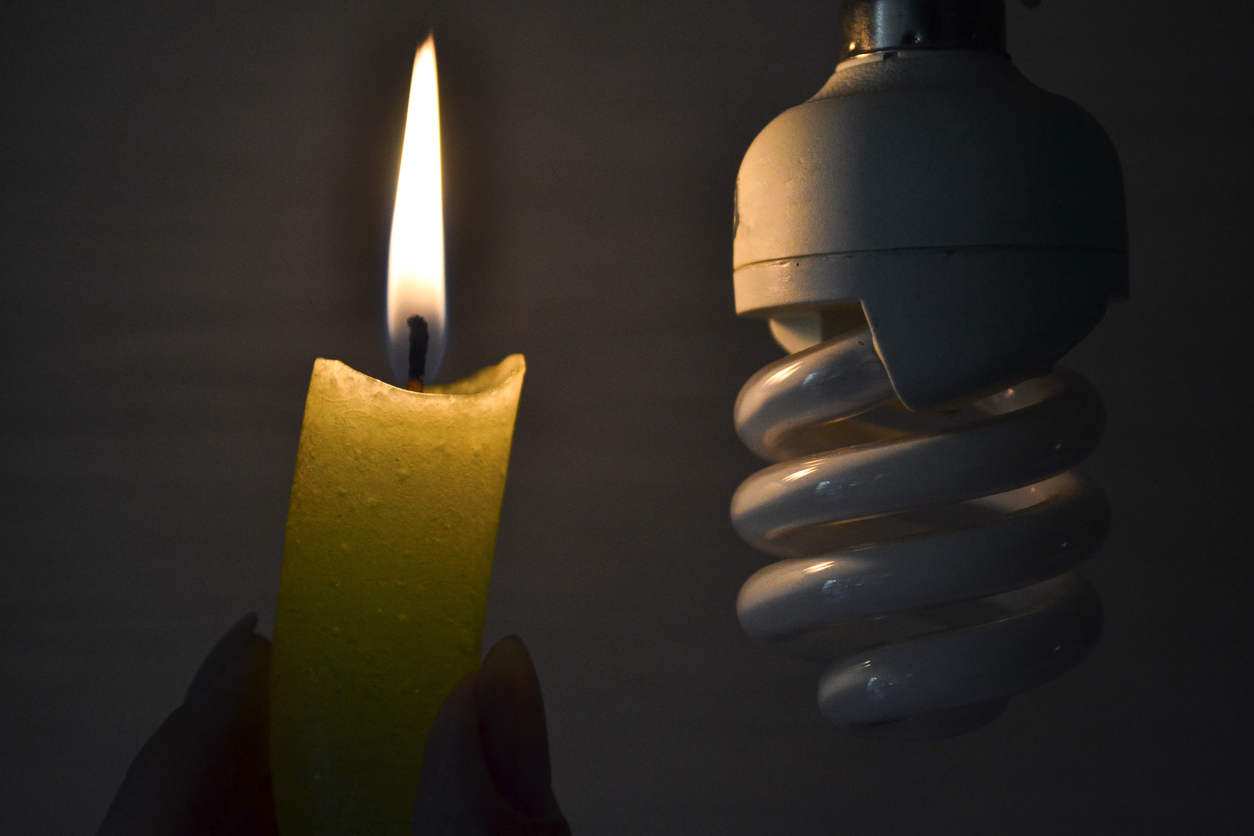If you've noticed lights flickering in your house, it can be worrying. Flickering lights can indicate serious electrical issues that could lead to fires or other hazards if left unaddressed. But with some basic knowledge about your home's electrical system and potential causes of flickering, you can assess the situation and determine if it's a quick DIY fix or time to call a professional electrician.
This comprehensive guide will provide homeowners essential information on:
How electricity flows through your home
Common causes of flickering lights
DIY troubleshooting tips
Electrical safety guidelines for minor repairs
When it's critical to contact a professional electrician
Preventative steps to take through regular maintenance
FAQs on addressing flickering lights
Arm yourself with the knowledge you need to keep your home's electrical system running safely and efficiently.
When Lights In The House Flickering
Flickering lights in your home can be annoying at best and dangerous at worst. Even minor and intermittent flickering should not be ignored - it almost always indicates some type of electrical problem that will likely get worse over time. Acting quickly to identify and fix the issue can prevent power outages, fires, or other safety hazards.
Home electrical systems can seem mysterious, especially when problems arise. However, every homeowner should have a basic grasp of electrical safety along with the ability to recognise issues. This will allow you to determine whether a problem can be addressed yourself or requires calling in an expert.
In this comprehensive guide, we'll provide an overview of what you need to know about your home's electrical system, outline common causes of flickering lights, and detail solutions - both DIY simple fixes and when professional repairs are a must. You'll also learn simple preventative maintenance that can reduce the chances of flickering lights happening in the first place.
Electrical System 101
Before diving into what causes flickering lights, it helps to understand the basic components of your home's electrical system and how power flows through your house. The electrical system includes:
Fuse box/consumer unit
- The central distribution point that divides power into dedicated circuits. It contains circuit breakers that shut off power to individual circuits if they become overloaded.Wiring - Insulated copper wires inside walls, ceilings, and floors distribute electricity throughout the house. Wires connect the fuse box to outlets, switches, and appliances.
Outlets & Switches - Outlets provide connection points to plug-in devices. Switches control ceiling lights and fans.
Lights & appliances - Lights, appliances, electronics, and other devices draw power through outlets and switches to operate.
Electricity originates from the utility lines outside your and surrounding homes. It enters through the fuse box and then flows through wiring to distribute power throughout dedicated circuits in the house. Switches control lighting circuits while outlets supply power to plug-in appliances and devices.
The Signs of Electrical Problems
Electrical issues can manifest in several ways, but the most common indicators are:
Lights flickering in the house - Frequently visible flickering of lights is the most obvious symptom of an electrical problem. Flickering may impact one light or multiple lights across circuits.
Power flickering in the house - You may notice abrupt but brief disturbances in power without visible lighting effects. This could cause TVs, computers, or other electronics to turn off and on quickly.
Warm outlets - Unusually warm outlets or switches indicate potentially loose wiring connections. This creates electrical resistance and excess heat.
Buzzing sounds from outlets - Buzzing, sizzling, or crackling noises point to arcing electrical currents, which can precede sparks or fires.
Any of these signs mean electrical issues exist, and steps should be taken to identify and resolve the problem. Ignoring symptoms allows problems to worsen over time.

Common Issues Behind Flickering Lights
If you notice flickering lights in your home, there are several possible causes to investigate:
Faulty light bulbs - Old bulbs nearing the end of their lifespan can flicker and should be replaced. Try a new LED light bulb to see if it fixes the flickering.
Dimmer switch problems - Dimmer switches use complex circuits that can fail over time and cause flickering. Replacing a faulty dimmer may solve flickering across multiple lights.
Loose light fixture - Over time, light fixtures can loosen due to vibrations expansion/contraction. This can create flickering from loose connections. Tightening fittings may help.
Overloaded or faulty circuit - Too many appliances on one circuit can cause flickering, as can worn circuit breakers, old electrical wiring, or loose connections.
Voltage irregularities - If lights across your whole house flicker simultaneously, dips or spikes in your home's electrical voltage could be the issue. Contacting your utility provider may help track down the cause.
Main service issues - Flickering across the whole home can also indicate problems where the main service cable connects to your home. In rare cases, you may have loose service conductors, especially if your fuse box is under stairs.
Pinpointing the specific cause requires methodically checking bulbs, switches, and outlets until the source of the problem is identified.

DIY Electrical Light Fixes
Some minor electrical issues can be addressed safely through DIY repairs:
Replace bulbs - Simply changing out old fluorescent, halogen or CFL bulbs can fix, in some instances, the flickering. Using LED bulbs matched to the light fixture can prevent future issues.
Reset breakers - For flickering limited to only certain lights/outlets, tripping and resetting their corresponding circuit breaker in the fuse box may help.
Check connections - Ensure light switches and outlets are tightly secured with no exposed wires. Tighten any loose light fixtures as well.
Test outlets and switches - Use a multimeter or outlet tester to check for faults causing abnormal power flows.
When doing any DIY electrical work:
Exercise extreme caution and turn off the power at the breaker before doing repairs.
Only use proper tools like voltage testers when troubleshooting.
Only open up wire connections or replace breakers/fixtures if you fully understand electrical circuits.
For novice DIY-ers, calling an electrician is highly recommended for anything beyond very minor fixes like changing the light with a new bulb. The risks of electrocution or creating new issues from improper repairs outweigh any potential DIY cost savings.
When to Call a Professional Electrician?
While simple fixes can resolve some electrical flickering, it's wise to contact a licensed electrician for the following scenarios:
Flickering occurs across multiple rooms or throughout your entire house.
You uncover buzzing outlets, warm switches, or melted/damaged faulty wiring, which indicate serious issues.
Breakers/RCDs frequently trip even after being reset.
Flickering persists after trying bulb/breaker/connection replacements.
You don't feel fully comfortable doing repairs yourself.
Hiring a qualified professional like V&R Electrical Services for major electrical issues is strongly advised. Here's why:
Electricians have specialized training to accurately diagnose problems. They can discover issues like faulty breakers or hazardous faulty wiring you may miss.
Professionals have the expertise to thoroughly and safely fix complex problems like damaged circuits or inefficient connections creating resistance and flickering.
Electricians know all relevant building regulations and will ensure any repairs meet the highest safety standards.
If the root cause of flickering comes from outside your home's wiring, an electrician can properly interface with your utility company.
Don't take risks doing DIY electrical repairs without proper knowledge. The stakes are high due to potential electrical fires, electrocution, or destruction of appliances. Professionals have the tools and know-how to solve flickering issues and prevent catastrophic damage to your home and belongings.
Maintenance is Better Than Repair
Beyond addressing any current flickering light issues, it's wise to take preventative measures to maintain your electrical system and reduce future problems. Suggested maintenance tips include:
Have a qualified electrician conduct annual inspections of your home's electrical fuse box, wiring, outlets and switches. They can discover issues before they cause flickering.
Replace old light bulbs regularly before they burn out. Newer LED bulbs last years longer without flickering.
Exercise caution to avoid overloading circuits with too many appliances running at once.
Address minor issues quickly, like loose outlets or faulty switches, to prevent small problems from worsening.
Ensure all electrical work meets building regulations. Outdated electrical wiring and fuse boxes should be upgraded for your safety.
Keep combustibles and flammable materials away from outlets, switches and, light fixtures, fuse boxes, which can overheat.
By proactively maintaining your home's electrical system, you can avoid many flickering issues, power disturbances and, in the worst case, potential fire hazards. Contact V&R Electrical Services to schedule a preventative electrical inspection today by filling out the contact form.

FAQs: Quick Answers on Flickering Lights
Q: Why do multiple lights flicker in the house?
A: Some common culprits behind flickering across multiple lights are a loose connection at the main electrical fuse box, an overloaded circuit, or a failing dimmer switch. An electrician should investigate and repair the cause.
Q: Is it normal for LED lights to flicker in the house?
A: LED bulbs can flicker due to compatibility issues with some dimmers. However, frequent flickering of LEDs still indicates a problem needing correction for optimal lightbulb lifespan and efficiency.
Q: Do multiple lights flickering mean my house has faulty electrical wiring?
A: It's possible, but not the only potential cause. Flickering could come from a bad bulb, switch, breaker, or loose connection. An electrician can best determine if wiring issues exist.
Q: Can I fix flickering lights myself?
A: It depends on the cause. Simple fixes like changing light bulbs may work. But for larger issues within walls or at the fuse box, it's safest to hire a professional to avoid electrocution risks or creating new problems from improper repairs.
A Few Words From Lighting Experts
Having lights flickering in the house can be annoying at best and dangerous at worst if left unaddressed. While a flickering light now and then is no cause for immediate alarm, frequent or widespread flickering indicates an electrical issue needing attention. Don't ignore symptoms that could precede power failure or dangerous fire hazard.
Arm yourself with knowledge of your home's electrical system, along with potential causes and solutions for flickering lights. This allows you to make informed decisions on what can be DIY repaired versus what requires professional help. Quick action also reduces the chances of flickering worsening into larger issues.
Stay vigilant with regular maintenance like inspections and bulb replacements, too - being proactive is the best way to keep your home's power flowing safely and prevent flickering in the first place. Contact qualified specialists like V&R Electrical Services at the first sign of trouble.











